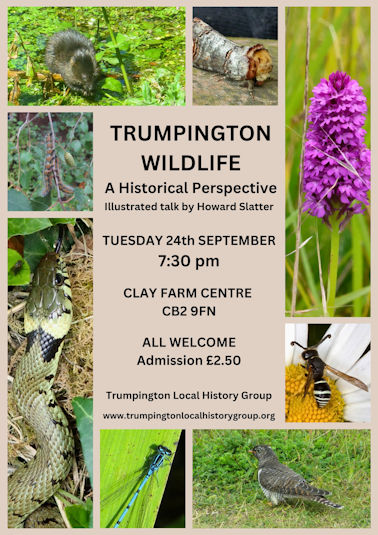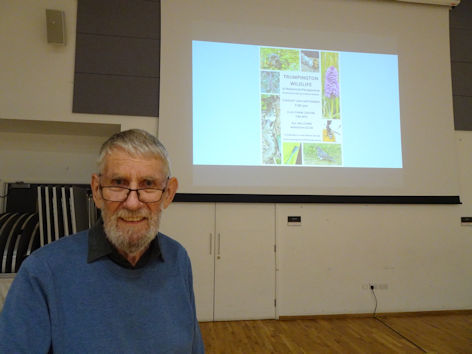

At the meeting on 24 September 2024, Howard Slatter gave a detailed review of the natural history of Trumpington, incorporating evidence from archaeological excavations, historic sources and more recent publications, research and observations. Howard included information about local plants, insects including butterflies and moths, fish, amphibians and reptiles, mammals and birds. For the full text of the talk, go to the Trumpington Wildlife page.
The audience in the hall at the Clay Farm Centre were very appreciative of Howard’s talk. Questions and comments included:
Q: what has been the impact of greater light pollution on local wildlife.
A: higher levels of light pollution have led to more flight calls from migrating thrushes.
Q: what has been causing the decline in the number of hedgehogs.
A: this is a national problem, with factors including a decrease in habitat, predation by badgers, roadkill, pollution and pesticides.
Q: is there a local population of cuckoos?
A: there have been sightings in Trumpington Meadows Country Park, and they are seen passing through the area in the autumn migration. Howard was not aware of cuckoos breeding in the local area.
Q: there are a lot of badgers at the local caravan site (Shelford Road) and sightings of green woodpeckers, great spotted woodpeckers and redwings.
Q: there has been a decline in bees and bats in recent years.
A: Howard said that this year he had not seen so many bats as in the past, but this is very weather dependent. The same may be the case with bees.
Q: there have been large numbers of ivy bees and honey bees.
A: Howard noted the sightings of ivy bees in the Foster Road allotments, they spend most of the year underground.
Q: local sightings of a ring-necked parakeet, including in Byron Square, Shelford Road and the Foster Road allotments.
Q: mink were eradicated from the Trumpington Meadows area when the land was part of the Plant Breeding Institute (1970-90).